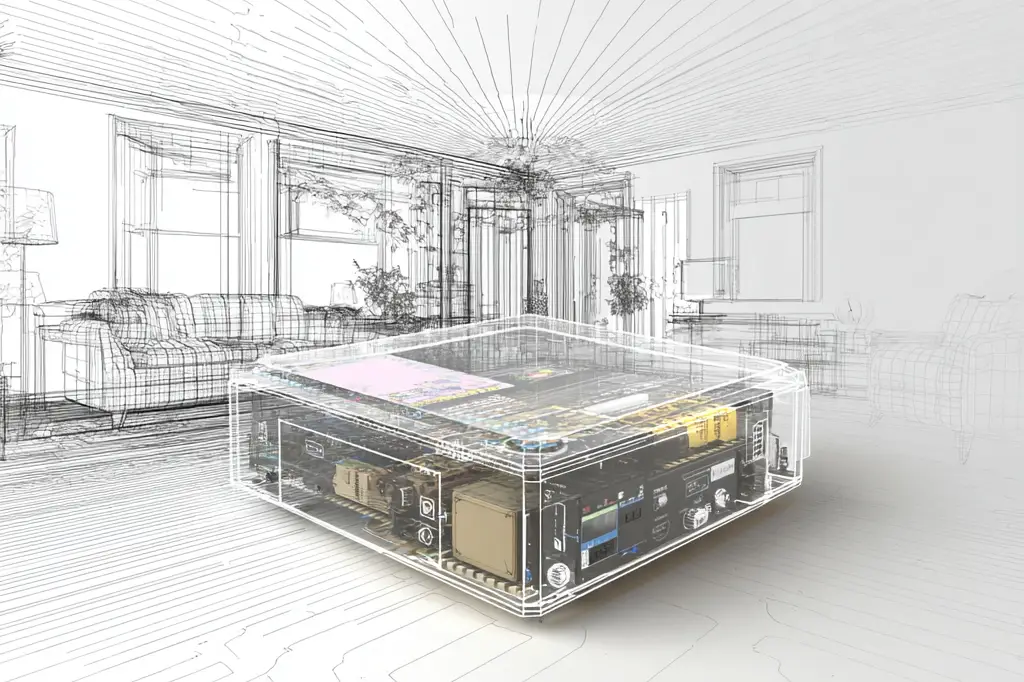If your smart home is a living organism, its central controller – the hub – is unequivocally its brain. This single component orchestrates every device, executes every automation, and serves as your primary interface to your intelligent environment. Choosing the right hub isn’t just a technical decision; it’s a philosophical one that dictates your system’s capabilities, its respect for your privacy, and its long-term viability.
So, how do you choose the brain that best aligns with your vision for a Thinking Home? The choice comes down to a few core philosophies:
- Local Control vs. Strategic Cloud Use: As discussed, a Thinking Home prioritizes Local Control for mission-critical systems, ensuring privacy, speed, and reliability by keeping processing within your home. However, some platforms allow for the strategic, secure use of cloud services for non-essential enhancements that offer clear advantages. This is the essence of Intelligent Sovereignty.
- Open vs. Closed Systems: Do you want limitless flexibility to integrate almost any device, or a polished, simpler experience limited to officially approved devices?
- Simplicity vs. Power: Are you looking for a streamlined, guided experience that’s quick to set up, or a powerful toolkit for nearly limitless customization that demands a greater investment in learning?
Let’s explore some of the leading hub philosophies that align with building a locally-focused Thinking Home:
1. The Open-Source Powerhouse: Home Assistant Home Assistant is the ultimate expression of the Thinking Home philosophy. It’s a free, open-source software (FOSS) project built by a global community, prioritizing local control and privacy. It grants users unparalleled power and flexibility, acting as a meta-platform that can leverage best-in-class open-source tools.
- Strengths: Unmatched power, limitless customization, vast ecosystem (over 2 million active installations and thousands of integrations). It can run on various hardware, from affordable Mini-PCs (recommended for performance and reliability over Raspberry Pi) to official plug-and-play devices like Home Assistant Green.
- Trade-offs: It has a notoriously steep learning curve, requiring a willingness to tinker and learn to unlock its full potential. While the core software is free, the optional Nabu Casa subscription ($6.50/month) offers hassle-free remote access and voice assistant integration, while also directly funding project development.
2. The Local-First Appliance: Hubitat Elevation Hubitat Elevation is built on the uncompromising principle of 100% local control. It’s a dedicated appliance that ensures maximum speed, reliability, and privacy, making it an ideological cousin to Home Assistant but delivered in an out-of-the-box package.
- Strengths: Rock-solid reliability, exceptional speed due to purely local processing, and a powerful Rule Machine automation engine that allows for complex logic. It includes built-in Zigbee and Z-Wave radios. It offers immense power for a one-time hardware cost, with no mandatory subscriptions for core functionality, including remote access.
- Trade-offs: Its web-based user interface is frequently described as dated or clunky.
3. The Polished All-in-One: Homey Pro Homey Pro aims to bridge the gap between complex DIY systems and user-friendly consumer hubs, designed for the power user who values versatility in a polished, commercially supported device.
- Strengths: Features eight integrated wireless radios (Wi-Fi, Bluetooth LE, Zigbee, Z-Wave, 433MHz, Infrared, Matter, and Thread). Its Homey Flow and Advanced Flow offer graphically intuitive, visual automation editors.
- Trade-offs: Its high price tag ($399) can be a significant barrier. Some advanced users note that device support can be superficial, and the powerful Advanced Flow editor currently requires an internet connection to access and edit flows, even if they run locally.
Making Your Choice
Your choice of a smart home hub is a pivotal act of Intelligent Sovereignty. It dictates the very limits of your control, making this decision the cornerstone of a truly private and autonomous home.
For a more detailed comparison of these platforms, including hardware specifications and user experiences, consult Appendix D of The Thinking Home.
Next, we’ll delve into my personal journey: how my smart home frustrations led me to develop the principles of “The Thinking Home” and build “The Panorama.”

